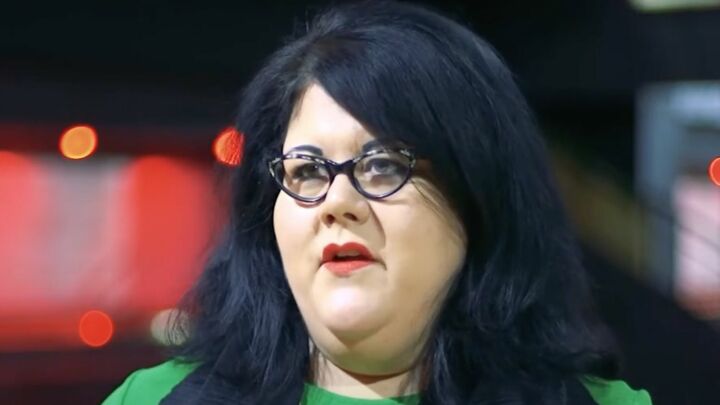They shock too much
Modern art requires the audience's reaction, but can't abide its judgement.

Want to read spiked ad-free? Become a spiked supporter.
A weird thing has happened. I think it’s got something to do with New Labour – though it doesn’t spring from them (what does?), but has emerged out of the same post-Cold War soup. While culture has supposedly become more accessible, the public has become increasingly estranged from contemporary art.
Of course, proponents of contemporary art would deny this. They point to the 300,000 visitors who went to see the Sensation exhibition at the Royal Academy in 1997. They can’t use the numbers who visit Tate Modern, though they often try, because that gallery doesn’t just show contemporary art. But who is this vast public, that is supposedly going to see contemporary art?
My guess is that, apart from a handful of people like myself who take a broad, professional interest in art in general, there was hardly any overlap at all between the people who queued to see the Sensation show and twice the number who queued to see the Monet show that preceded it.
One difference was obvious just from looking at the two queues: the Monet queue was predominately grey-haired, while the Sensation show’s was shaved. So contemporary art appeals to a young public, argue the proponents of modern art – just as the Impressionists did in their day.
One of assumptions that underpins generally accepted thinking about art today is that each new generation of artists produces its own, radical art that challenges the establishment and is rejected by them. This seems to be an obvious truth.
There is, however, a fundamental difference between the handful of supporters (by no means all young) who actively sought out the obscure exhibitions and studios of the Impressionists in the 1870s and the line of young people queuing to see the Sensation exhibition in the hallowed halls of the Royal Academy just over a century later. The former had the strength of mind to look beyond accepted values, popular acclaim and financial success, while the latter were worshipping at exactly those shrines.
They were standing in line to see the most successful, highly promoted and priced new art of their day, just as people (by no means all old) had queued a century before to see the Salon art the Impressionists were fighting against. The so-called radical art is now the establishment.
The problem is – what have you got to fight against if you’ve made it? The Chapman brothers now want art to be more shocking. But who do they want to shock? Artists who don’t produce art like them? Hardly, because they don’t accept such art exists. Art that doesn’t shock isn’t art – which justifies them, they think, in defacing Goya’s prints. And who does art have to shock to be art? The general public, that’s who – or at least the mass media.
So today we are blessed with the unedifying spectacle of a small crowd of fantastically promoted individuals performing antics that they claim are art simply because they offend us, like sticking an erect penis on the face of a Barbie doll, or encouraging a swarm of flies to digest the fluid extracts of a decomposing cow.
It is true that Manet’s Olympia offended the moral prudery of the post-Revolutionary middle-classes of France, but it also deeply disturbed artists who couldn’t paint as brightly and boldly as that. Manet’s nude is actually, in artistic terms, extremely conventional. The really radical development was within the world of art itself.
The so-called ‘public’ reaction was nothing to do with this artistic revolution. The battles of modern art were fought within the world of art, not outside it, as they are today. Matisse could coin the term ‘cubism’ to express his contempt for what Picasso and Braque were doing, but this didn’t mean he was immediately banished to join the philistines outside the magic circle of art. The radical and the traditional were all part of one activity, they shared the same language – the creation of art.
Today it is very different. If you criticise Beuys or Andre, Hirst or Emin, you’re immediately dismissed as old and reactionary, as I know to my cost. Waldemar Januszczac, in his diatribe against my book The Eclipse of Art, compares me to Hitler, sitting alone on a mountain top, dreaming up the Nazi party (1). All I have tried to do is to assess, as freshly and openly as I can, the quality of the art of our times. Where I identified vastly inflated reputations, I tried to discover the reasons for this exaggerated praise.
Many courtiers have dressed the Emperor of modern art in invisible finery. Among them have been the artists themselves. They claim now to be the only arbiter in the decision about what is art – by declaring that this brick stack or that bin-liner is a work of art. But an artist is only successful in claiming something to be a work of art when, and if, a viewer responds to it as such. As LS Lowry remarked to a young artist who was complaining that no-one bought his pictures, ‘Well, no-one asked you to paint them’.
Even though we know that if artists didn’t create art today there’d be no art to look at, this doesn’t mean that the audience’s opinion can be totally discounted. Patronage needn’t be a dirty word; it can often inspire artists to greater heights, as happened time and again in the Renaissance. It is true that artists generally have to set their own targets, but they often find it stimulating to work on something that they know will be seen and judged by someone else. Art cannot exist without an audience.
When David Frost asked Tracy Emin on his TV show why her bed was a work of art, she replied ‘because I say it is’. He didn’t then ask her, as he could have done, ‘But who says you’re an artist?’. Artists don’t, by any means, hold all the cards. They are free to try to be artists, but others are also free to decide for themselves whether they have achieved this goal.
It is often claimed that ready-mades ‘bring art closer to life’ and this, it is often said, is the ambition of every modern artist. But as artists have asserted that their life is their work, the status of the work of art has fallen while that of the artist has risen. This has led to the perception of artists as modern-day shamens – divinely gifted individuals who turn everything they touch into art, and, if they strike lucky, like Joseph Beuys, gold. So artists themselves have become increasingly distanced from everyday life as their ‘work’ has become more integrated with it. The gap between art and its public has widened.
And into that gap, waving the banner of youth, blithely stepped the politicians of New Labour.
Damien Hirst’s ‘spin paintings’ are circular canvases on which household paints were flung while they were spinning. He saw the technique demonstrated on the popular children’s TV programme, Blue Peter. He was delighted because, as he said, ‘You can’t make a bad one’. They have certainly been a money-spinner. With remarkable naivety for a government accused on every front of spin, one of these paintings, called beautiful, all round, lovely day, big toys for big boys, Frank and Lorna, when we are no longer young (1996) was used on the front cover of a book Creative Britain written in 1998 by then culture secretary Chris Smith.
There is a cynicism in the heart of much that passes for art today, which sits oddly with its claim to be art. After all, art has to be positive, even when it deals with the most depressing aspects of experience, because if it isn’t what is the point of making it? But far from seeking a positive response to its work, the establishment art of today actually stimulates a negative reaction.
New Labour cannot be accused of doing that, but there is a cynicism in its thinking too, because where can one go if one wants to oppose it? You are either with New Labour, or nowhere, and that is not a healthy state of affairs for either politics or art.
Julian Spalding is founding director of the Glasgow Gallery of Modern Art, and author of The Eclipse of Art: Tackling the Crisis in Art Today, Prestel 2003. Buy this book from Amazon UK (price £12.95) or Amazon USA (price $19.95).
Read on:
spiked-issue: Museums and galleries
(1) Sunday Times, 25 May 2003
Celebrate 25 years of spiked!
A media ecosystem dominated by a handful of billionaire owners, bad actors spreading disinformation online and the rich and powerful trying to stop us publishing stories. But we have you on our side. help to fund our journalism and those who choose All-access digital enjoy exclusive extras:
- Unlimited articles in our app and ad-free reading on all devices
- Exclusive newsletter and far fewer asks for support
- Full access to the Guardian Feast app
If you can, please support us on a monthly basis and make a big impact in support of open, independent journalism. Thank you.






Comments
Want to join the conversation?
Only spiked supporters and patrons, who donate regularly to us, can comment on our articles.